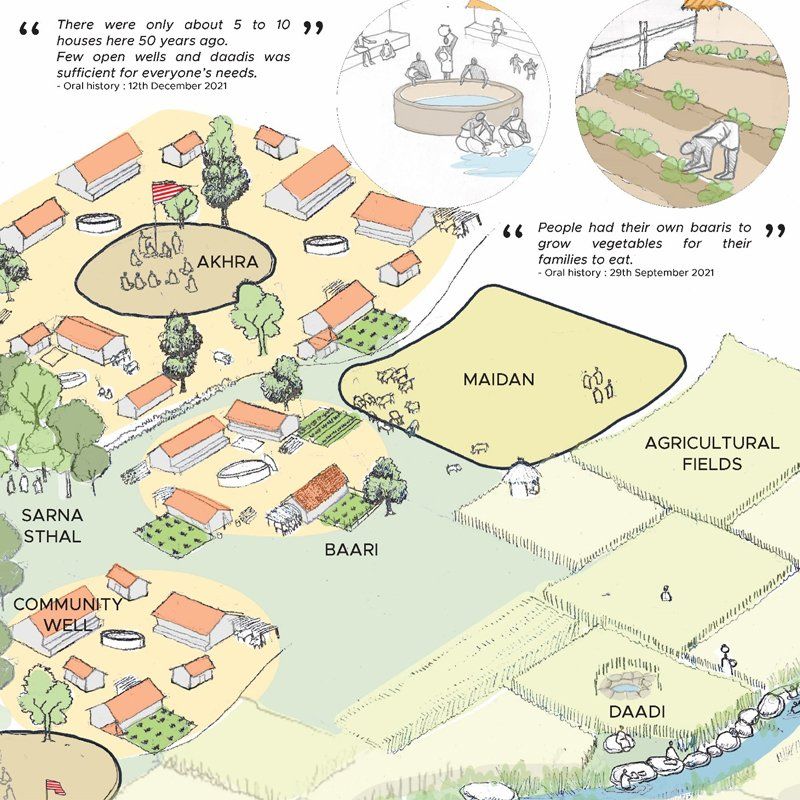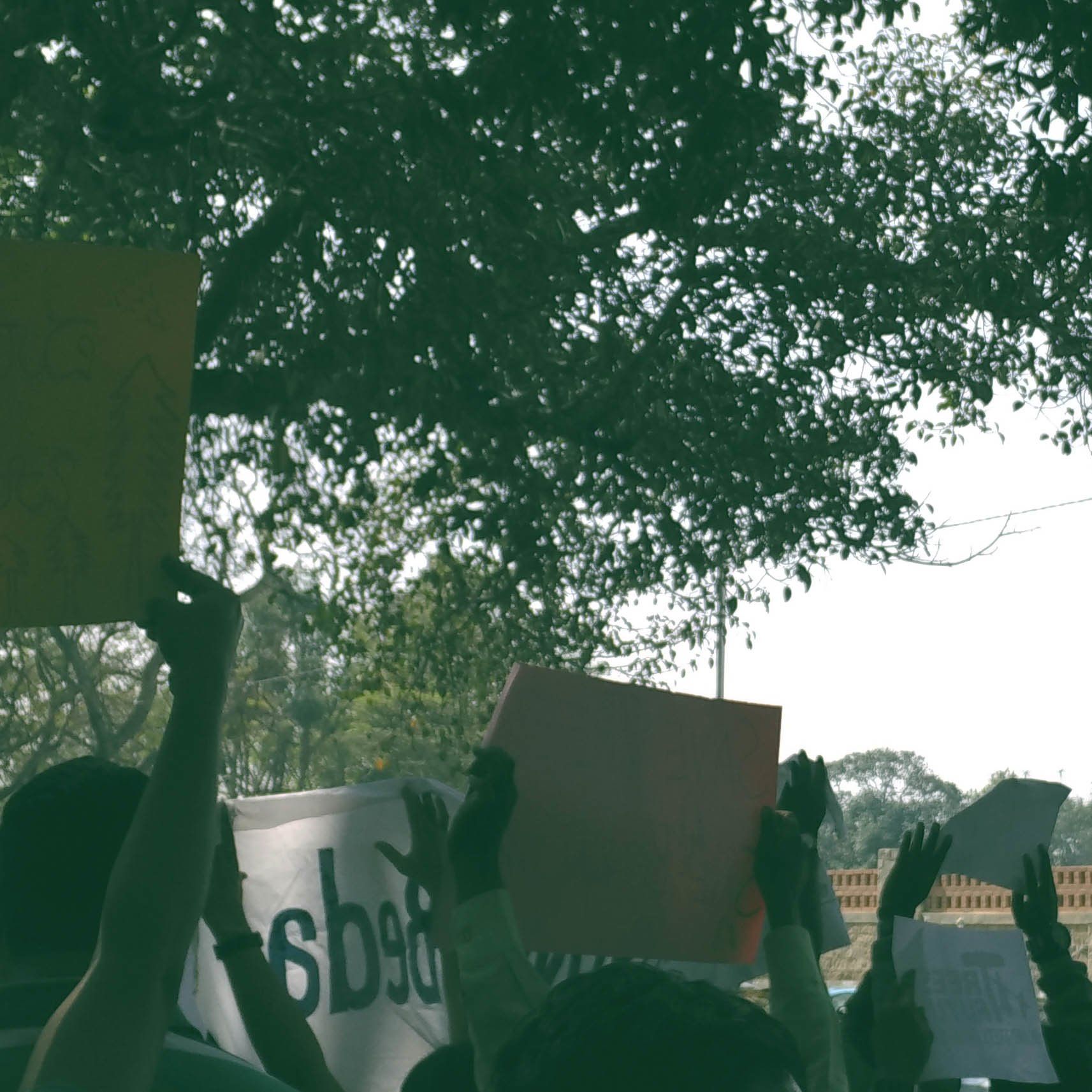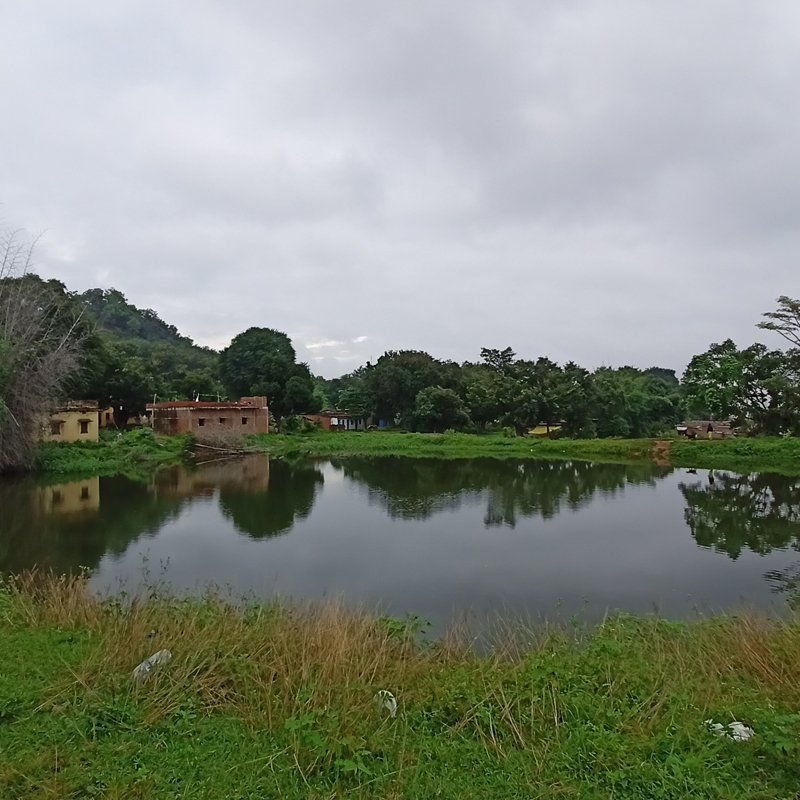Planning for Socio-Economic development in Bengaluru: From a land-use plan to a city plan
Dr. Anjali Karol Mohan for Bengaluru Citizen Matters • March 6, 2018
MASTER PLAN PREPARATION IN BENGALURU

In a conversation with a colleague on the draft Revised Master Plan 2031, I was told that councilors of the BBMP (of the 198, less than thirty sat in on a presentation on the Draft RMP 2031) are convinced that the Master Plan is not a workable plan. When probed further, I was told that many councilors brought up issues that are technically not the concern/ mandate of the Master Plan.
For instance, some mentioned that roads in their wards were in a bad condition. Others mentioned efficacy of water supply. Many others believe that the tool of Transfer of Development Rights (premised on a relatively lower base FAR -1.5 to 2), will not yield desired results.
A fundamental question that comes to mind is how can basic requirements of citizens – be these good roads or the adequacy of water supply – not be the concern of the Master Plan, the only statutory tool that guides the growth and development of the city? Who, or what else is supposed to address these concerns and demands? For the time being, I will push aside another niggling question, in the hope that it will eventually get addressed: why would a discussion on the only statutory tool – RMP 2031- that aims to manage and control the growth and development of Bengaluru witness such dismal political participation.
Flaws in the planning process
The reason for why the Master Plan does not (or cannot) address concerns of citizens, on one hand, and, the argument that these concerns are not the mandate of the Master plan emanate from two fundamental flaws in the current planning practice / process.
First is a flawed conception of what constitutes a Master Plan
and the process of Master Plan evolution. Second, embedded in this understanding of the Master Plan and its preparation, is a lack of acknowledgment that planning and governance are intrinsically linked. Current planning processes have little or no regard to how and when the plan will be implemented. The RMP 2031 unfortunately is no exception to this rule.
The Karnataka Town and Country Planning Act, 1961 defines a Master Plan as a “series of maps and documents indicating the manner in which the development and improvement of the entire planning area [larger than the municipal area] and within the jurisdiction of the Planning Authority [not the municipal jurisdiction] are to be carried out and regulated.”
The development and improvement of the planning area is to be achieved through zoning of land use (residential, commercial, industrial, agricultural, recreational, educational and other purposes) to be regulated through zoning regulations. In other words, the BDA (and not the BBMP) prepares the Master Plan (land-use plan) for the Local Planning Area which includes the Bengaluru municipal area, although is not restricted to it.
In contrast, the 74th CAA, 1992, premised on the principle of subsidiarity mandates that the municipalities – the BBMP in this case- should plan for socio-economic development within its jurisdiction. The amendment requires the Government of Karnataka to devolve the function of urban planning including town planning to the municipalities. In turn, municipalities are required to deliver socio-economic development through a city plan. This plan is envisaged as a bottom-up process that entails collation of, and negotiation among ward level needs and perhaps aspirations, articulated through ward committee plans/ projects.
From a Land-use Plan to a City Plan
For the city plan to steer socio-economic development, it should be more than a land-use plan. It needs to necessarily address issues of mobility, physical and social infrastructure, basic services, inclusion, security and gender in all its dimensions and not just as a function of land use. Clearly, the Master Plan does not deliver on this objective.
This objective can be met, were the 74th Constitutional Amendment, 1992 implemented in its true spirit. The amendment espouses the linkages between planning and governance in defining a planning hierarchy that amalgamates top-down and bottom-up processes. Were Bangalore to be planned and governed per this amendment, we would witness a much-needed departure within the planning profession: from a land-use plan prepared by the BDA to a socio-economic development plan (inclusive of land-uses, although not limited to it) prepared by elected governments such as the BBMP through its ward committees.
The 74th CAA, 1992, in conceiving the Metropolitan Planning Committee further strengthens the planning and governance linkages. The MPC should prepare a ‘draft development plan’ with “regard to the plans prepared by the municipalities and panchayats in the area”. The draft development plan is therefore, also a process of collation of, and negotiation between the urban and rural settlements in the metropolitan city-region.
Top-down approach not helping
There are two things that require critical mention. First, a city-region or a metropolitan region (as per the 74th CAA, 1992) is a multi-municipal and multi-panchayat jurisdiction. Hence, the draft development plan of the MPC has among its objectives resolution of inter-municipal [read jurisdictions] conflicts, addressing matters of common interest among municipalities and panchayats, coordinating spatial planning and planning and management of regional level infrastructure (like water resources and transport) with due consideration to environment and other natural resources.
Notifying the Metropolitan Planning Committee for the Bangalore Metropolitan Area has little meaning as the plan (RMP 2031) for this area (one municipality and several panchayats) is prepared by the BDA as a top-down process. It has little citizen and political involvement and, by extension ownership. If the Government of Karnataka is to achieve the objectives of the MPC in letter and spirit, the Bengaluru MPC should be notified at the regional level i.e. the Bengaluru Metropolitan Region. The region has several municipalities and panchayats and provides a spatial canvas large enough (8005 sq kms) to plan and manage regional level infrastructure while also addressing ecological concerns.
MPC plan by definition, is ‘draft’, not final!
Second, the operative work in the provision of the draft development plan by the MPC is ‘draft’. What this implies is that the preparation of the development plan should necessarily be an iterative process – one that can accommodate the continuous and rapidly changing needs of the municipalities and the panchayats expressed through their respective plans.
In other words, the draft development plan is conceived to be a dynamic plan. Needless, to mention that the dynamism of this plan will best be operationalised when the municipalities and panchayats prepare rolling plans for their respective jurisdictions. This contrasts with the current master plan approach which is revisited once in 10 years. It is for this that Master Plans are often criticized as static.
The RMP 2031 has concluded on the public objection and suggestion stage and is awaiting approval, notwithstanding the results of the Courts on PIL’s filed. In the latest hearing in the High Court, the BDA argues that the Master Plan is not the same as a draft development plan. While this is true, it is a partial argument. Clearly, the master plan and the process behind its evolution is not an appropriate fit within the hierarchy of plans envisaged in the 74th CAA, 1992.
If Bangalore were to be planned as per the latter, we will not have ‘A Master Plan’. Rather, we will have a hierarchy of plans that are rolling, dynamic and embedded – A Draft Development Plan, A City Plan and projects (if not a plan) at the ward level. Such a process will ensure an involved and informed bottom-up planning practice. More critically, it will ensure the participation of the councilors and perhaps a better ownership of the plan.
Note: Opinions expressed here are author’s own.

Being a member of the Adaptation Research Alliance, ARA (a global, collaborative effort to increase investment and opportunities for action research to develop/inform effective adaptation solutions) and an ARA Micro grantee, Integrated Design (INDÈ) was invited to organise a networking session at the Global Gobeshona Conference-2 (conference theme: exploring locally led adaptation and resilience for COP27). The networking session was titled ‘Situating Urban (City) Resilience within the City-Region’ and was held on 1 April 2022.

The online magazine SustainabilityNext carried an article by Benedict Paramanand titled “Has Fatigue Set into Civic Activism in Bengaluru?” The article caught my eye amidst the Covid 19 humdrum as I was looking for alternative news. I have been actively engaged in the debates around the (ill)growth and mis(management) of Bangalore for over two and half decades in my capacity as a professional planner straddling civic society, public policy circles and academia. The article revived in my mind some thoughts and suggestions that I articulate here. The attempt is not so much to answer the question, as it is to understand the shortcomings and limitations of civic activism in steering the complex politico-socio-economic and cultural layers that make up a vast conglomeration like Bengaluru. A disclaimer here merits mention. The premise that no individual stakeholder, public or private, has the knowledge and resources to tackle the wicked problems underpins successful governance arrangements. What this premise implies, by extension is that all stakeholders – public or private – have limitations. Civic Society (CS) is one amongst the numerous stakeholders that have a role – by no means a lesser one- to play. Yet, there are limitations to this role. While these limitations are embedded in the very nature of operation of the CS, there are conscious ways and means of overriding some limitations to move towards a larger impact. Bridging limitations is a critical need. Much of what I articulate while contextual to Bengaluru, perhaps holds true for civic activism across domains and geographies. To begin with, a critical question requiring reflection is the difference between civic activism and the much advocated (in (good) governance debates) Civic Society Organisation (CSO) engagement. These generally get clubbed in one category – while in theory and practice, that is not the case and therein lies the first limitation. Activism defined as direct vigorous action especially in support of or, in opposition to, one side of a controversial issue is willy-nilly an act of reaction. Reaction often leaves little space for taking distance and exploring the systemic cause of the challenge – the challenge itself sets the agenda. In contrast a proactive engagement of the civic society, through progressive partnerships while also triggered by a challenge is different in that the challenge is anticipated and therefore the agenda is set by civic society themselves. In Bengaluru, protests against the state-imposed flyover (# steelflyoverbeda ) and elevated corridors (# TenderRadduMadi ) is an example of the former. In contrast, the long-standing work on the ward committees which has seen some traction in the recent past – albeit slow and tardy – is an example of the latter. Having started as a proactive CSO engagement, the movement for neighbourhood planning and governance through ward committees (# NammaSamitiNamagaagi ) in the recent past has bordered on being reactionary, thereby hinging on activism. Although an ‘always proactive approach’ is not possible, given the capacity of our government to spring surprises, it is critical that the CS begins to move towards a proactive stance. There will always be a non-uniform interplay between being reactive and proactive. A second limitation, linked to the first, is the lack of capacity of the CS to act on relevant and practical evidence. This will require the CS to open their doors and develop progressive partnerships, including partnerships with policy makers, professionals (note that I do not use the word experts) and academia. An all-time reactionary mode of operation allows neither for collaborations nor evidence. Evidenced advocacy and conversations require domain knowledge (experienced domain knowledge is even better) which can facilitate knowledge production and mobilization. Activism hinges on passion (amongst other drivers) which is not the same as domain knowledge and knowledge mobilization. Both passion and domain knowledge have a role, yet the two can neither replace each other nor should be confused. Rather, passion that pivots on evidence and knowledge is a double-edged sword, one that has the capability to steer reactionary behavior to an informed proactive engagement. Such a move will serve to, over a period of time, course correct policies that are currently influenced by dominant political structures, electoral volatility and elite capture, as against being evidence based. A third limitation that needs consideration is the nature, purpose, goal and objective of the civic society coalition/group. Most often mobilisation is around a seemingly common purpose, goal and objective. For instance, groups that coalesced against large infrastructure projects as mentioned above or the demand for footpaths and public transit (# BusBhagyaBeku ) and sub-urban rail (# chukuBukuBeku ) are not homogeneous. It is often a mixed bag as against an imagined and perhaps desired integrated unit. Underpinning this pursuit of collective goals and objectives are individual desires, identities (which in themselves are multiple), beliefs, perspectives and previous experience, all of which are critical drivers, often leading to fragmented voices. This fragmentation notably, also derives from the inability to use evidence or domain knowledge. Elitist Activism Furthermore, activism in itself is and can be elitist. When linked to high levels of access it can be potentially hampered by what is referred to as ‘elite capture’. There are two types of activism: elite activism stemming from mobilization of charismatic individuals capable of getting their voice heard. Mass activism, in contrast, is where the general public, the haves and the have-nots, mobilize collectively. The two are not mutually exclusive, although both are critical. Barring a few occasions, Bengaluru’s activism has been elitist with a few voices that can access public policy corridors and therefore get heard. Consequently, consciously or unconsciously there is a leveraging of public policy for personal or limited gains (to a neighbourhood or a community). Activism is a luxury that not everyone can afford. Those who can afford it have a dual responsibility of using it to build bridges by roping in knowledge and experience on one hand and ensuring inclusion by creating spaces and opportunities for mass activism, on the other. The current modus operandi lacks on both counts. These shortcomings have led to what is being referred to as limited success, although limited from whose lens and success for whom is an additional enquiry, one that merits a separate post. What I do concur with is that at best the city has seen some cosmetic changes. Let me take the same two examples the article uses to demonstrate a going forward beyond cosmetic progress. First are the lakes in Bangalore that have seen a fair bit of activism. In many neighborhoods, thanks to the many charismatic residents, lakes have been claimed as better maintained natural resources. But for the initiatives of a few citizens, many lakes would have morphed into real estate projects. Yet, the same groups have done little to engage the larger neighborhoods to ensure that these natural resource ‘spaces’ become public ‘places’ for the neighborhood and the city. This would require a proactive engagement in identifying the larger neighborhood and the numerous linkages – backward and forward – that this neighborhood has had and can nurture with the lakes as public places. The second is the Tender Sure roads pioneered by Bengaluru. The implementation of Tender Sure roads is progressing incrementally moving from a pilot in the city core to radiating outwards in various directions. Putting aside the debates on the efficacy of the design as well as the appropriateness and relevance of the idea, the incremental implementation is marked by controversies on the criteria to shortlist roads such that both the visibility of and utility to the neighborhood and the city can be maximized. This too has not happened. Both these examples offer a critical insight: that the activism (and the few instances of engagement) has not translated into a thinking city. Changes are still hovering around the thinking individual. The transition to a thinking city is an emerging imperative, one that demands systemic change along various dimensions, some of which I have discussed above. To sum-up, sustained and big bang change as against cosmetic and incremental change is the need of the hour. It requires at the outset, one, more proactive engagement and less reactive activism; two, passion combined with experienced domain knowledge to trigger evidenced advocacy and change; and, three a less fragmented approach through creating meaningful spaces for mass activism along with the existing elite activism that the city has. While there may be numerous ways to act on these three, the Ward Committee space offer a ready platform for proactive action, evidence-based advocacy and wider participation. Arguably, this space is rife with political contestations and may seem a daunting challenge, yet, an engagement within this space is a surer foot forward. Clearly, there is a passion amongst Bangalore’s elite to be part of something bigger and this is a moment to be seized.


